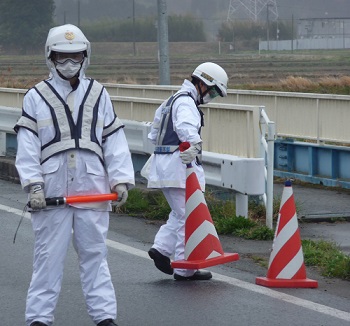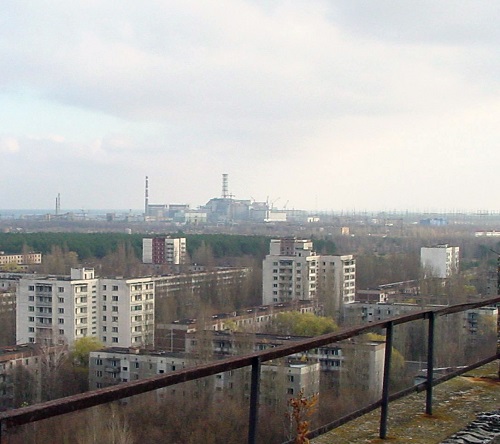So Dr Z – I read some stories saying that tens of thousands of people got cancer from Chernobyl and others that say less than 100 did; some stories say that some Japanese kids got thyroid cancer from Fukushima and others that say only a few or none did; some stories about birth defects from using depleted uranium and other reports that there were none at all. It makes it hard to figure out what’s actually going on. Can you help sort through all of this and tell me what the science tells us?
Let’s start in the Balkans and Middle East – during the Balkan wars that followed the breakup of Yugoslavia and during the first Gulf War, depleted uranium munitions were fired by tanks and aircraft; many of them struck their targets and a lot did not. The ones that missed often ended up embedded in the ground, but they also struck buildings, rocks, bridges, and other hard objects, often shattering into fragments that can shed uranium into the environment. After the wars, public health officials in the new nations began to realize that they were seeing more children with birth defects than had been recorded by the pre-breakup Yugoslavian government. Since uranium is toxic and mildly radioactive, some physicians and public health officials wondered if the birth defects were caused by exposure to depleted uranium. The problem is…according to a toxicological profile about uranium published by CDC, uranium exposure doesn’t cause birth defects, and it’s far too weakly radioactive to cause other health problems. So what explains the increased birth defects? Let’s hit the Pause button on that one for a moment – we’ll come back to it shortly.
After the Fukushima accident the Japanese checked all of the children in areas affected by the radioactive plume released by the reactor meltdowns; Soviet physicians had done the same thing when they began examining children following that accident and both nations noticed they were finding more thyroid nodules than expected. And there were many villages in Ukraine and Belarus that experienced elevated levels of birth defects after Chernobyl as well. There seems to be a fairly consistent pattern, and that pattern seems to reinforce expectations and “common sense.” And it’s almost certainly wrong – here’s why.

Put yourself in the position of the public health officials in, say, Bosnia in the aftermath of years of devastating war. Among the things you’ll want to do is to start assessing the health of your citizens; since you know your nation was shot up with radioactive munitions, it would make sense to look for evidence of reproductive effects, so you start looking for birth defects. And you find them – more than the pre-war records show. Here’s the thing – when doctors are sent out to look for things, they tend to find them; send a bunch of doctors out to look for birth defects and you can guarantee that birth defects will be found. And in a nation emerging from years of war following the breakup of a relatively poor Communist nation, there’s a good chance that past records are likely to be incomplete to begin with. Thus, the doctors are going to find more birth defects than had been recorded in previous years, if only because they have instructions to be thorough; birth defects that weren’t reported by family doctors previously will now be found and the reported numbers of birth defects will increase. And similar effects occurred in the Soviet Union and Japan following Chernobyl and Fukushima.
Several years ago I was curious about reports of birth defects in Ukraine and Belarus following the Chernobyl accident. So I went through a report by the United Nations Scientific Committee on the Effects of Atomic Radiation (UNSCEAR) to look at the amount of Cs-137 deposited on the ground in a number of cities, towns, and villages in these nations – the Cs-137 was deposited from the radioactive plume emitted by the reactor accident and places with more Cs-137 were exposed to higher levels of radiation. It the “extra” birth defects were due to the accident then we’d expect to see higher numbers of birth defects in areas with higher levels of Cs-137. That’s not what I found when I looked up the increases in birth defects in these cities, towns, and villages and compared them to the Cs-137 deposition – the pattern…wasn’t a pattern at all…it was a collection of points that looked like someone had fired a shotgun at the plot. Or, to put it another way, there was absolutely no relationship between radiation exposure and the increase of birth defects in Ukraine and Belarus in the aftermath of the Chernobyl accident.
The doctors who fanned out across Ukraine and Belarus after Chernobyl were also checking kids’ thyroids for nodules – that was because fissioning uranium atoms produces a lot of radioactive iodine, which is volatile (so it goes into the atmosphere easily) and which concentrates in the thyroid (which is fairly sensitive to radiation). And of course, nodules were found, almost certainly because the doctors were very diligent and checked kids who’d never been checked before and would likely not have been checked were it not for the accident. Incidentally, doctors in Japan were tasked with checking the thyroids of Japanese kids and they found the same thing, and likely for the same reason.
Something else to consider – with reports of cancer, anyhow – is the when the disease was identified; how long (or how soon) after the radiation exposure occurred. Cancer takes a while to appear – usually from several years to a few decades – and if a thyroid cancer is found less than a decade following exposure to radiation then it probably was not caused by the radiation exposure. It’s no less tragic for those struck nor for their families – but radiation was most probably not the cause.
Look – I have five kids and several of them have had health problems ranging from mild to potentially serious, and I’ve had my own concerns about cancer – this is all by way of saying that I have a tremendous amount of sympathy for anyone with cancer and for anyone with children who are ill. But when I look at the science, it’s clear to me that in the Balkans, around Chernobyl, and in Japan any reports of cancer or birth defects due to the reactor accidents are not consistent with what we know about the health effects of radiation exposure. They’re no less tragic for those who are afflicted and their loved ones – but they’re almost certainly due to radiation.
